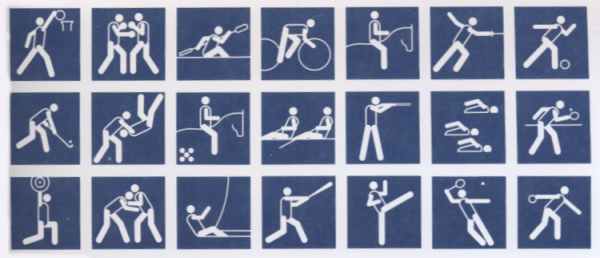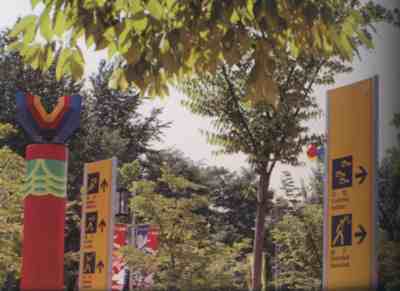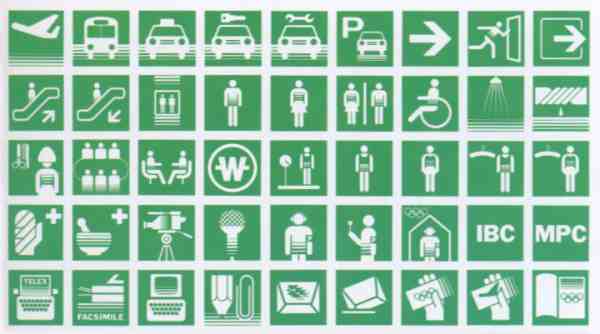Pictograms
| Pictograms 1988
Pictograms were produced to help overcome
communication difficulty arising from different languages. They were also
intended to accentuate the unique image of the Seoul Olympic  Sports pictograms, used on banners and infomational balloons, were convenient for spectators. Sports Pictograms In March 1985, the SLOOC produced 27 pictograms to be used for the Seoul Asian Games and the 24th Olympic Games. Following the Asian Games, however, the SLOOC decided to develop new creative Olympic pictograms, clearly distinguishable from those used in past Games, so as to emphasize the refreshing image of the Seoul Olympics. The work on the pictograms started in December
1986, and 30 draft pictograms were produced in April 1987, including 23
for the official sports, four for demonstration and exhibition sports,
and three for torch relay, marathon, and water polo. After two rounds of
screening, the draft pictograms were approved as official pictograms in
May 1987. 
The sports pictograms were distinguishable from
the past Games by the division of the composition into trunk, arms, legs
and head. The connecting parts for arms and legs were treated in a simple
and clear fashion but resembling as close to the composition of
human frame as possible. Sports pictograms
were also utilized as elements of expression in various public relations
and printed materials, including decoration, admission tickets for each
sport and posters. 
Funktional pictograms helped guide visitors to transportation and other services
Guide Pictogramms Guide pictograms were used to direct people to amenities, facilities or services. In September 1985, the SLOOC organized an
in-house production team to begin the work on the guide pictograms; final
designs of the guide pictograms covering 70 types were compledtd in January
1986, and were used during the Seoul Asian Games. In preparation for the
Seoul Olympic Games, eight types were additionally produced in September
1987. The guide pictograms were designed in forms to enliven the image
of the Seoul Olympic Games and to be easily understood by all concerned. ( Source document:
Official Report 1988, Vol. I, page 650) |